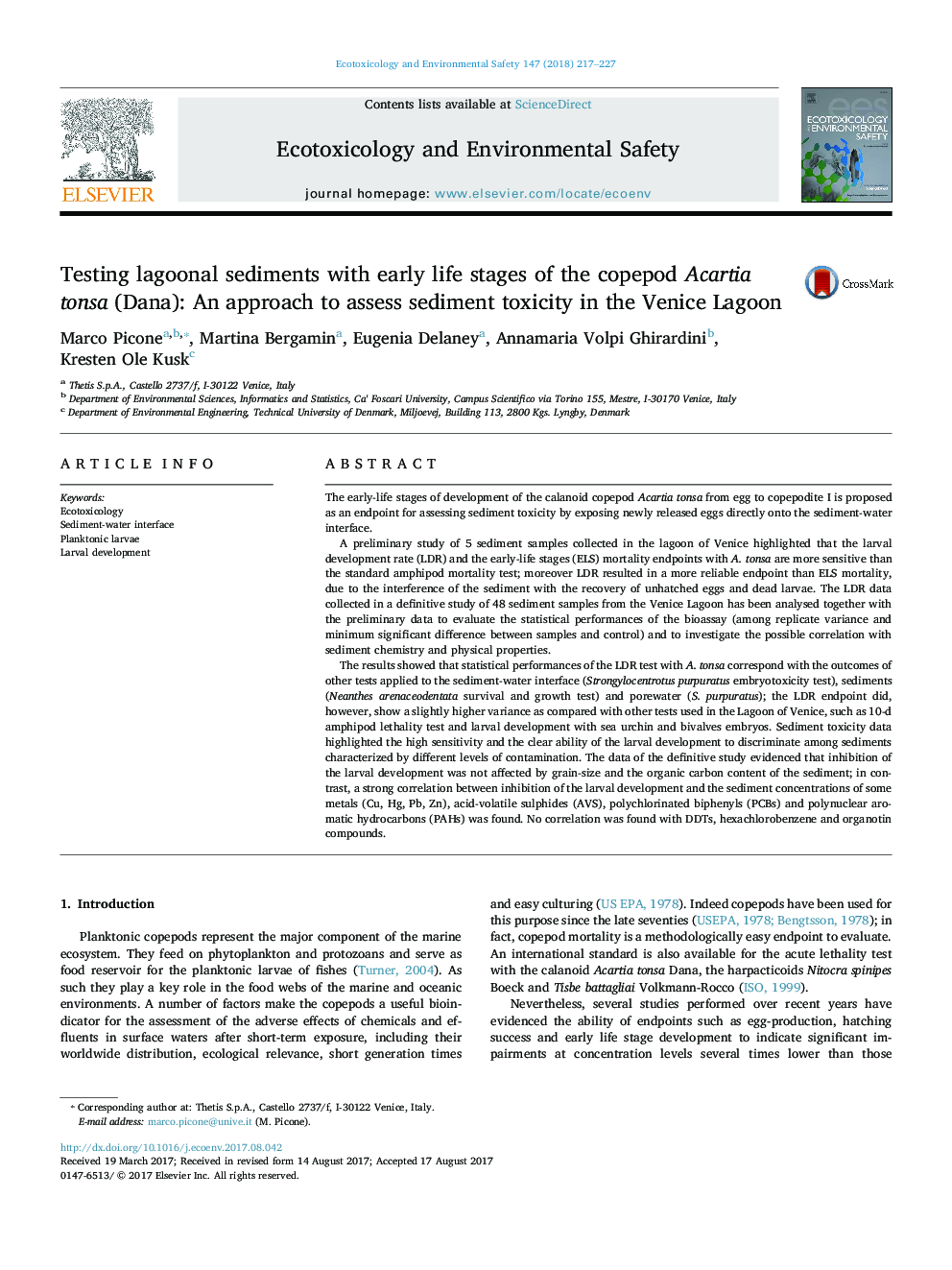| Article ID | Journal | Published Year | Pages | File Type |
|---|---|---|---|---|
| 5747802 | Ecotoxicology and Environmental Safety | 2018 | 11 Pages |
Abstract
The results showed that statistical performances of the LDR test with A. tonsa correspond with the outcomes of other tests applied to the sediment-water interface (Strongylocentrotus purpuratus embryotoxicity test), sediments (Neanthes arenaceodentata survival and growth test) and porewater (S. purpuratus); the LDR endpoint did, however, show a slightly higher variance as compared with other tests used in the Lagoon of Venice, such as 10-d amphipod lethality test and larval development with sea urchin and bivalves embryos. Sediment toxicity data highlighted the high sensitivity and the clear ability of the larval development to discriminate among sediments characterized by different levels of contamination. The data of the definitive study evidenced that inhibition of the larval development was not affected by grain-size and the organic carbon content of the sediment; in contrast, a strong correlation between inhibition of the larval development and the sediment concentrations of some metals (Cu, Hg, Pb, Zn), acid-volatile sulphides (AVS), polychlorinated biphenyls (PCBs) and polynuclear aromatic hydrocarbons (PAHs) was found. No correlation was found with DDTs, hexachlorobenzene and organotin compounds.
Related Topics
Life Sciences
Environmental Science
Environmental Chemistry
Authors
Marco Picone, Martina Bergamin, Eugenia Delaney, Annamaria Volpi Ghirardini, Kresten Ole Kusk,
